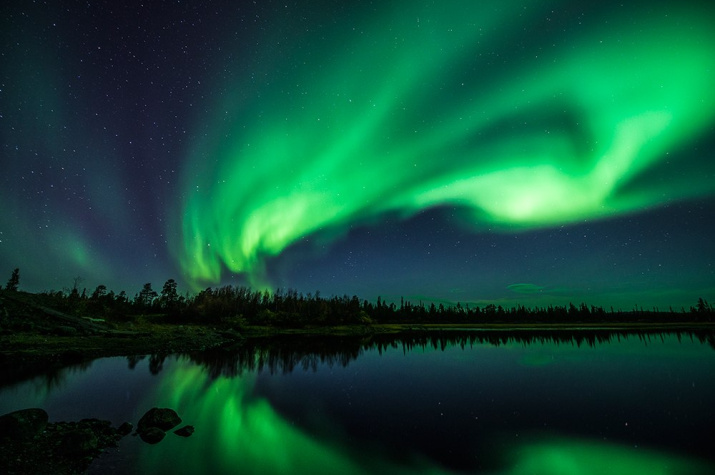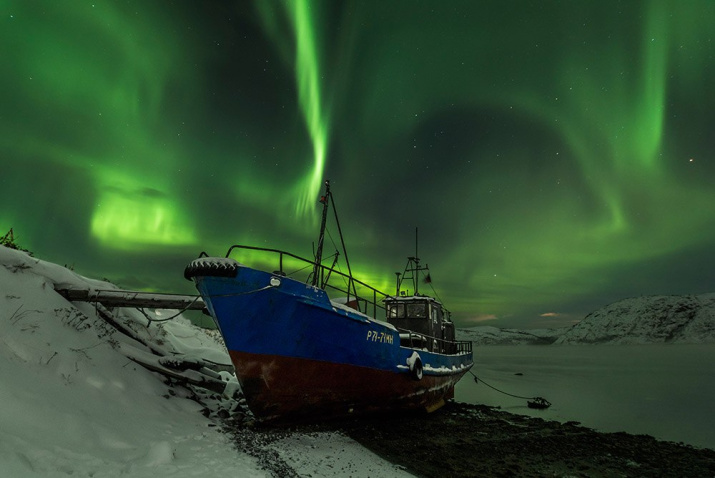The northern lights (also known as the polar lights) is the glow of the atmosphere resulting from the excitation of electrons and molecules of the atmosphere as a result of charged particles entering it. The intensity and size of the northern lights depend on the solar activity.
It is important to note that these phenomena are formed simultaneously in both the Northern and Southern hemispheres, therefore, from a scientific point of view, it is correct to say "polar lights", and not “northern lights”.
The Kola Peninsula, due to its location beyond the Arctic Circle, is one of the best places to observe the polar lights.
The “season” of polar lights hunting begins here in October and lasts until April. However, Murmansk residents mostly observe the bright green and purple flashes, shimmering in the sky, in the middle of winter.
The Sami, the indigenous small–numbered peoples of the Murmansk region, believed that the northern lights were the souls of the dead ascending to the sky. They associated many beliefs and legends with the northern lights.





